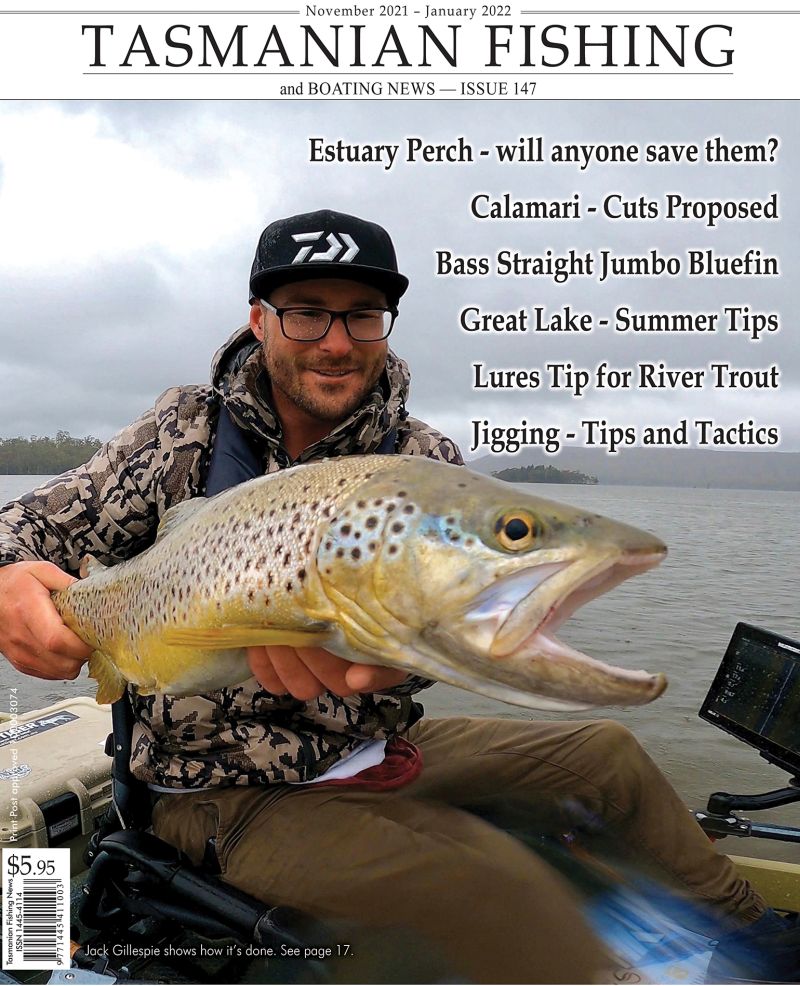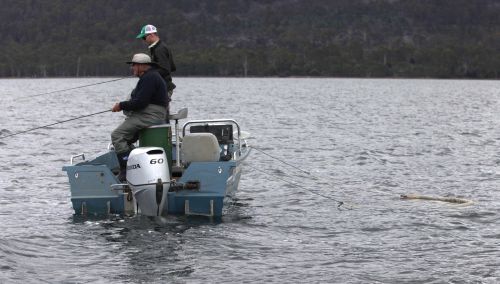From the Archives ...
Sea runners - Early Season Excitement - Christopher Bassano
Presented from Issue 100
Considering the world class quality of our sea trout fishery, these fish are not sought after by enough anglers. Sea runners live in the salt water and run up our estuaries and rivers from the start of August to the middle of November. At this time of the year, they are here to eat the many species of fish that are either running up the rivers to spawn or are living in and around the estuary systems. Trout, both sea run and resident (Slob Trout) feed heavily on these small fish which darken in colouration as they move further into fresh water reaches.
The majority of these predatory fish are brown trout with rainbows making up a very small percentage of the catch. They can be found all around the state but it would be fair to say that the east coast is the least prolific of all the areas. They still run up such rivers as the Georges (and many others) but their numbers along with the quality of the fishing elsewhere make it difficult to recommend the area above the larger northern, southern and western rivers.
Read more ... 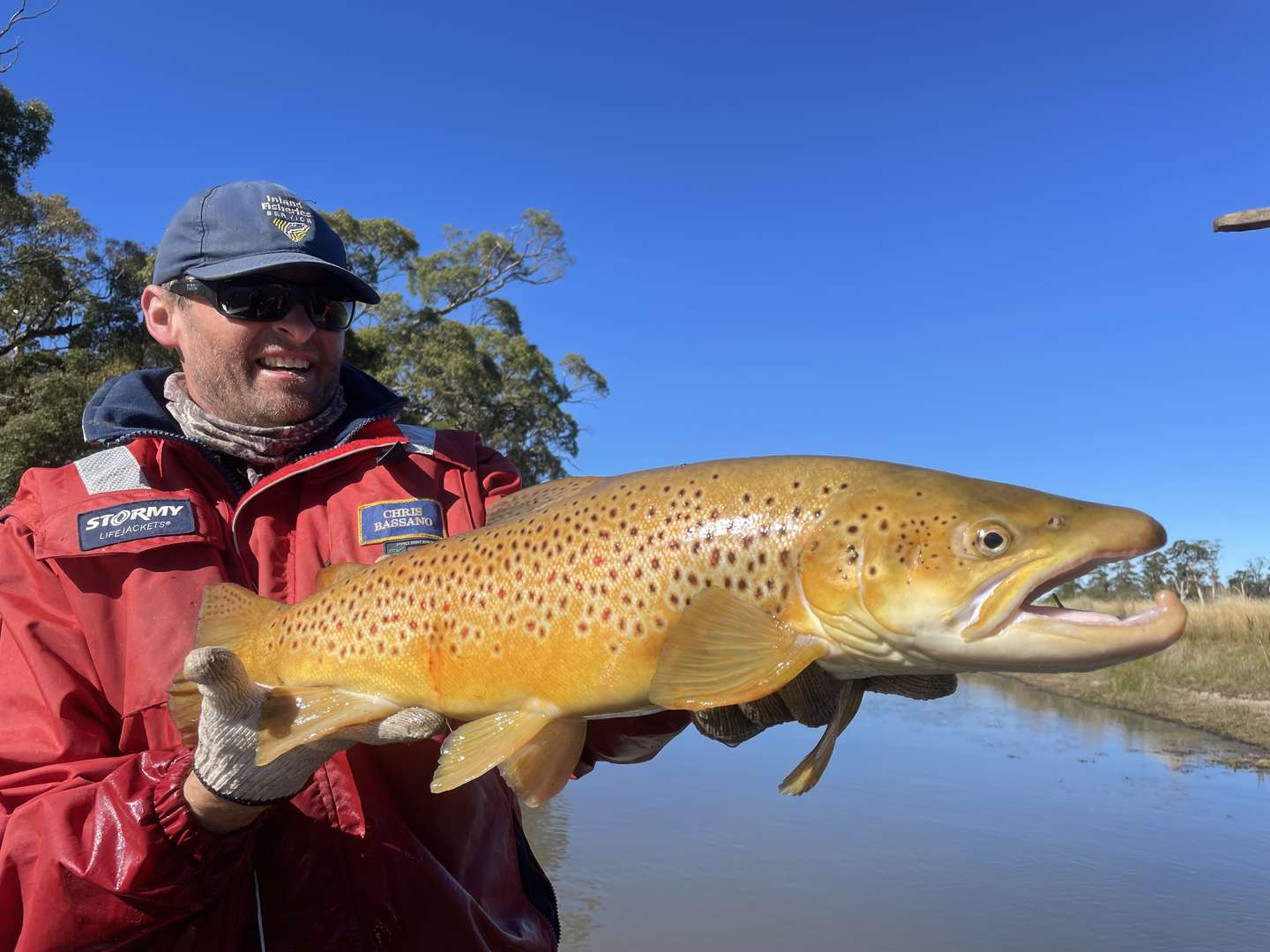 |
| Large brown trout from Lake Crescent |
During early March we did a box trap survey of the trout in Lake Crescent. Lake Crescent has been a real go to fishery again this season, with trophy brown trout luring anglers.
During the survey, the catch rate was lower than expected due to the warm shallow water. A total of thirty brown trout and three rainbow were caught over two days. The biggest brown trout weighed 4 kg and the smallest 0.2 kg. A third of the brown trout weighed between 3 - 4 kg.
Interestingly, two brown trout weighed under one kilo. This shows there is natural recruitment that is either coming from Agnews Creek on the eastern side of Lake Crescent or from Lake Sorell now the carp screens have been removed.
With natural recruitment there is no need to stock these waters with trout at this point. The lakes are both healthy after several wet years. Anglers are reporting brown trout in the 1.8-2.2 kg range from Lake Sorell.
With cooler water, both lakes Crescent and Sorell will be a good Easter fishing option.
A detailed report will be out soon.
Source: https://www.ifs.tas.gov.au/news/2024/mar/19/lake-crescent-fishery-assessment
- Written by Stephen Smith - Rubicon Web and Technology Training
- Category: IFS, DPIPWE, MAST and Peak Bodies
- Hits: 4756
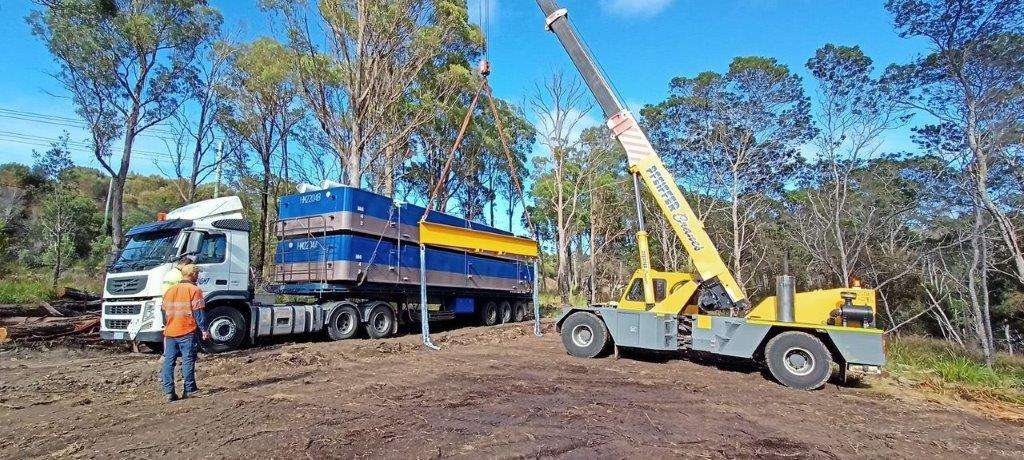 The Lake Leake boat ramp will be closed on Thursday 25th January 2024. Sub41 Construction Management and Tas Divers Group will be loading out construction equipment using the Lake Leake boat ramp and associated car park. For safety reasons, the area will be cordoned off during this time.
The Lake Leake boat ramp will be closed on Thursday 25th January 2024. Sub41 Construction Management and Tas Divers Group will be loading out construction equipment using the Lake Leake boat ramp and associated car park. For safety reasons, the area will be cordoned off during this time.
The barges are being used for dam maintenance work.
The contractors apologise for any inconvenience and plan to be clear of the area as quick as possible.
Source: https://www.ifs.tas.gov.au/news/2024/jan/22/lake-leake-boat-ramp-closure
- Written by Stephen Smith - Rubicon Web and Technology Training
- Category: IFS, DPIPWE, MAST and Peak Bodies
- Hits: 5176
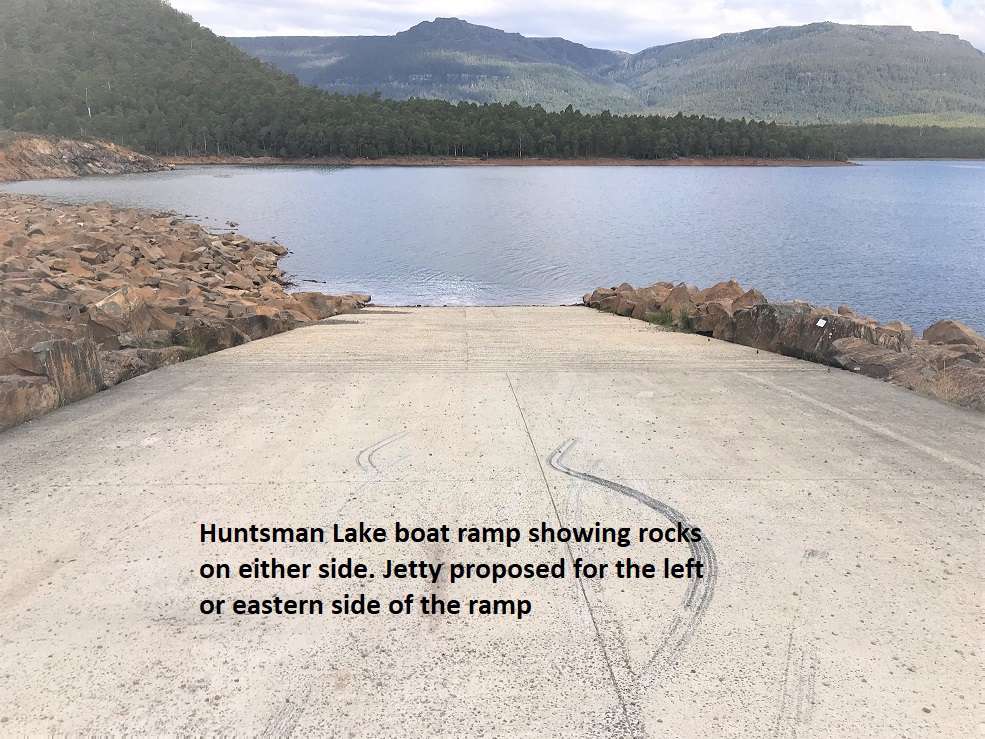 Construction of the Huntsman Lake jetty is scheduled to begin on 7th December 2023. Work will continue periodically over summer as the lake level falls. Anglers and other ramp users can expect minor delays when launching boats however the ramp will not be closed for any significant periods during construction.
Construction of the Huntsman Lake jetty is scheduled to begin on 7th December 2023. Work will continue periodically over summer as the lake level falls. Anglers and other ramp users can expect minor delays when launching boats however the ramp will not be closed for any significant periods during construction.
Source: https://www.ifs.tas.gov.au/news/2023/dec/05/huntsman-lake-jetty-construction
- Written by Stephen Smith - Rubicon Web and Technology Training
- Category: IFS, DPIPWE, MAST and Peak Bodies
- Hits: 5438
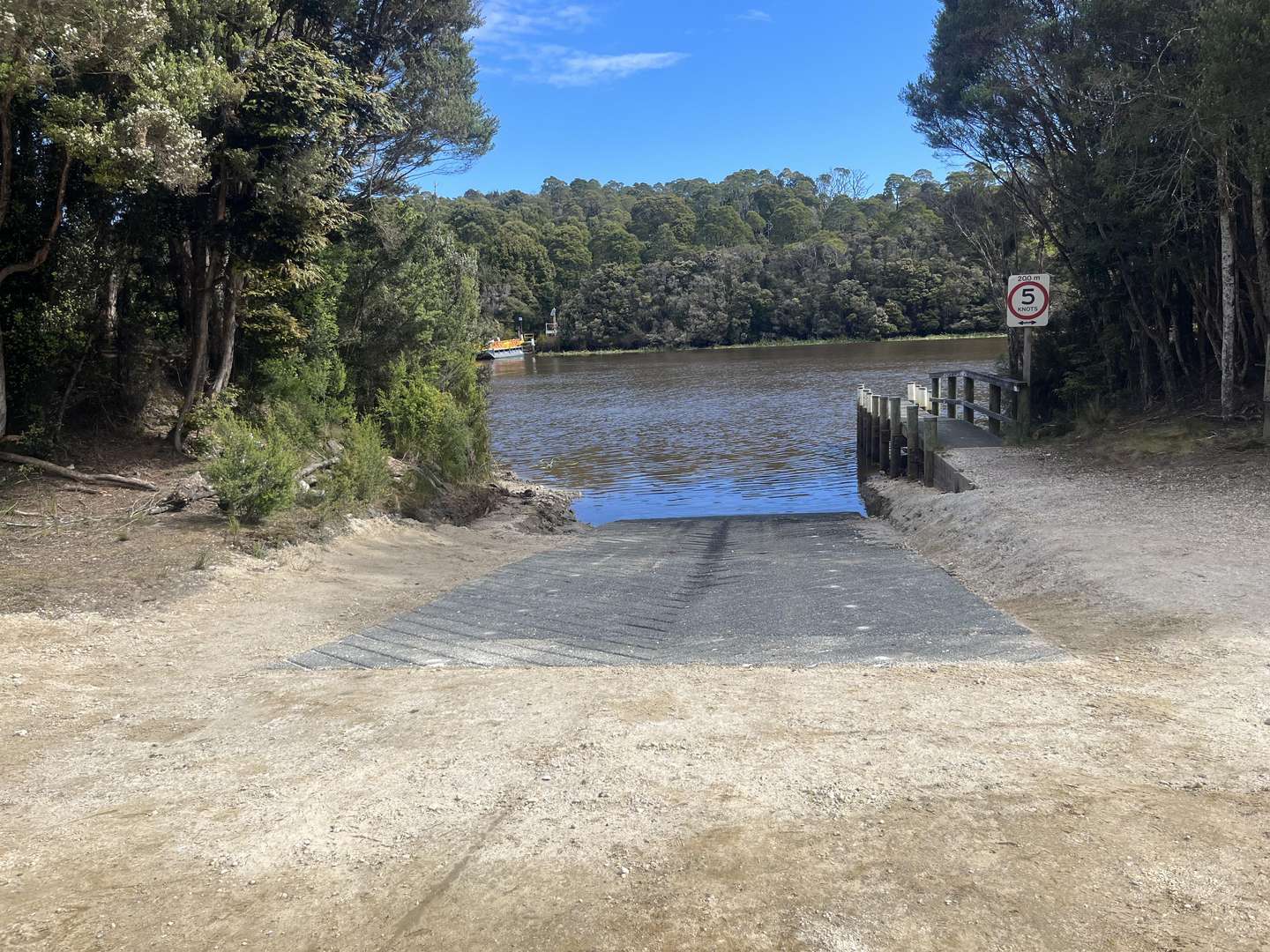 After a three-week closure, the Corinna boat ramp on the Pieman River has reopened after the recent upgrade. The new precast concrete boat ramp is longer and deeper than the old ramp which should stop boat trailers falling off the end of the ramp when the river is low. As an extra precaution a sign has been installed on the jetty showing where the ramp ends.
After a three-week closure, the Corinna boat ramp on the Pieman River has reopened after the recent upgrade. The new precast concrete boat ramp is longer and deeper than the old ramp which should stop boat trailers falling off the end of the ramp when the river is low. As an extra precaution a sign has been installed on the jetty showing where the ramp ends.
MAST would like to thank IFS for assistance with funding and the Parks and Wildlife Service in arranging approvals to carry out the work.
Source: https://www.ifs.tas.gov.au/news/2023/dec/05/corinna-boat-ramp-upgrade-complete
- Written by Stephen Smith - Rubicon Web and Technology Training
- Category: IFS, DPIPWE, MAST and Peak Bodies
- Hits: 5611
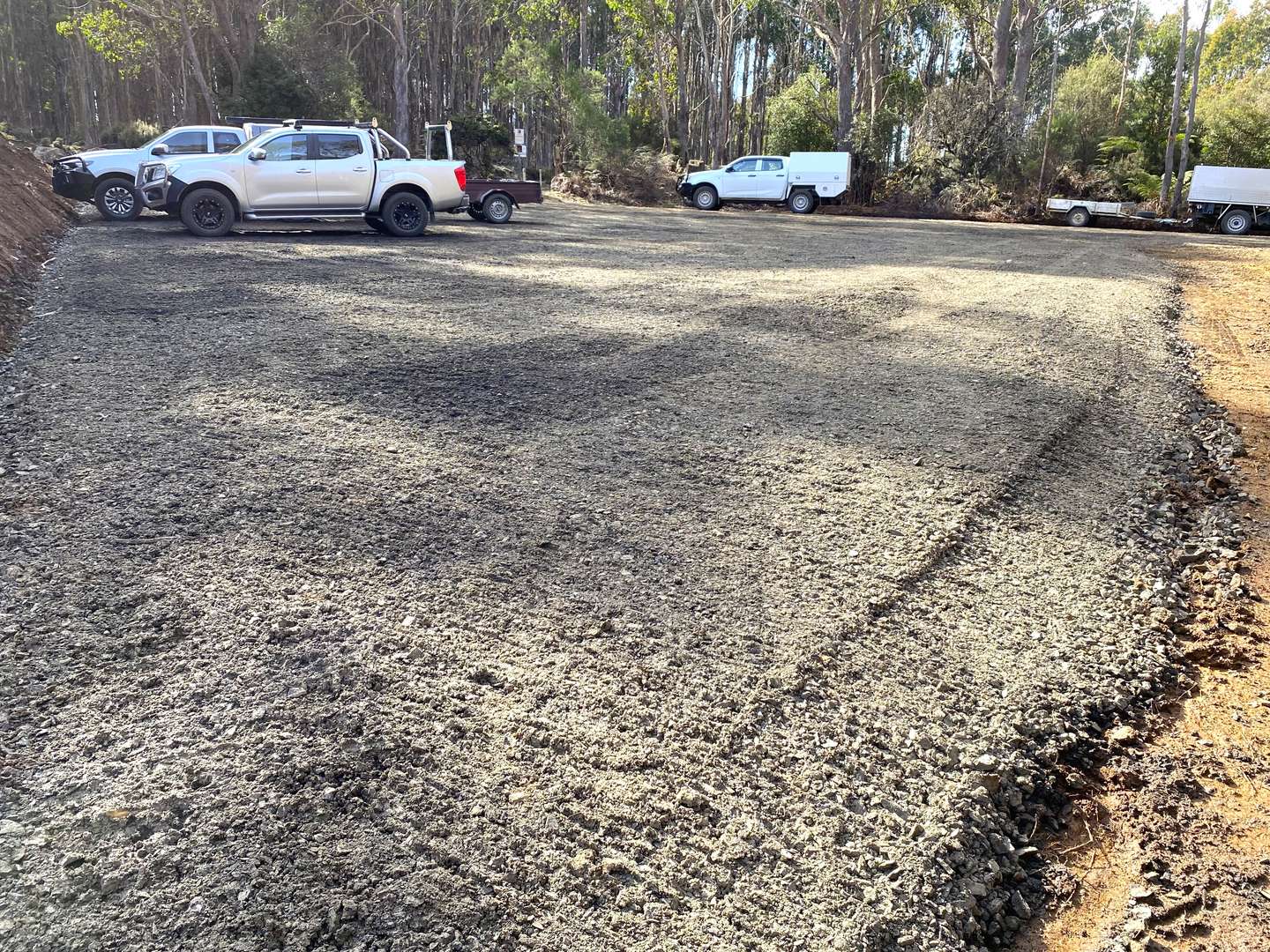 |
| Parking area extension Talbots Lagoon |
An extension to the parking area has been completed at Talbots Lagoon. Increasing popularity at Talbots over the past few seasons had seen the limited parking facilities become quite crowded on busy days.
In partnership with Forico, IFS engaged Civilscape Contracting to complete the car park extension. This involved removing a small amount of plantation trees, flattening the area and laying down road base gravel to finish the job.
In addition to this the Bosses Hole carpark has been re-gravelled, with the walking track to the lagoon improved including a properly gravelled kayak launching area. Drainage at both carparks has been improved and pot holes in the road around the main carparks have been fixed.
Anglers at the lagoon this week gave the improvements the thumbs up, with good quality fish being caught using all angling methods. Mayfly activity is just starting to fire up, and one angler was delighted to have caught 5 fish in an afternoon on mudeyes.
IFS would like to thank Forico for their ongoing support of Tasmanian trout anglers, and Civilscape for their thoroughly professional work.
Source : https://www.ifs.tas.gov.au/news/2023/oct/23/talbots-lagoon-access-upgrades
- Written by Stephen Smith - Rubicon Web and Technology Training
- Category: IFS, DPIPWE, MAST and Peak Bodies
- Hits: 6088
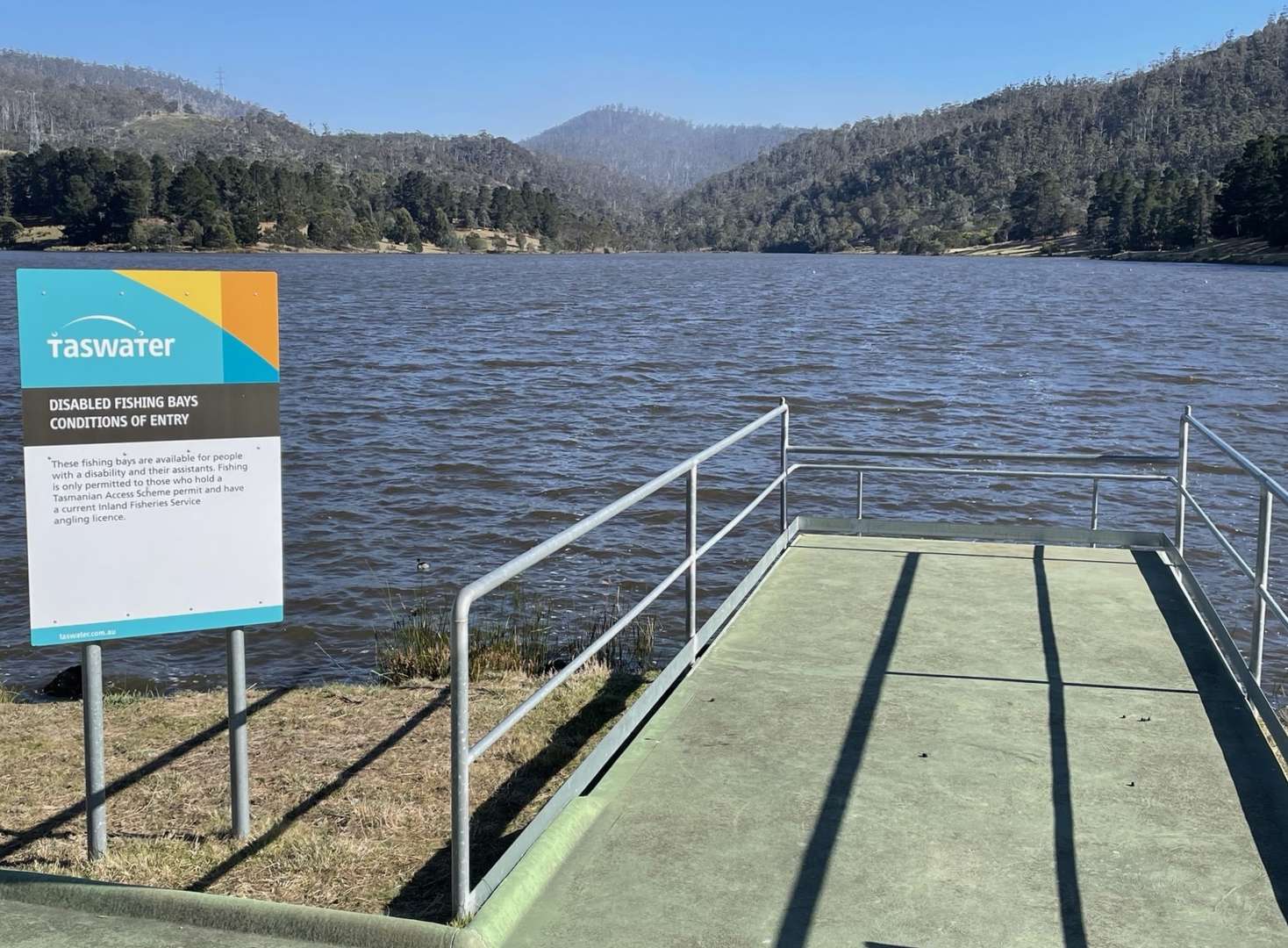 |
| Fishing platform Risdon Brook Dam |
Anglers with disabilities and mobility issues often have difficulty finding fishing spots. The IFS recommends a number of locations that may be suitable depending on your specific restrictions and available assistance. There are purpose built platforms at Risdon Brook Dam that are specifically designed and reserved for anglers with a disability. Other options in the south are on the River Derwent at the New Norfolk esplanade and Windsor Corner on the Lyell Highway. In the north a platform at Four Springs Lake is a great location particularly early in the season when lake levels are high. In the north west a level path provides access to the grassy shores of South Riana Lake and good access to the waters edge is available at the north western end of the Pet Reservoir.
All of these waters have plenty of trout so get out there!
Source : https://www.ifs.tas.gov.au/news/2023/oct/18/fishing-opportunities-for-anglers-with-disabilities
- Written by Stephen Smith - Rubicon Web and Technology Training
- Category: IFS, DPIPWE, MAST and Peak Bodies
- Hits: 6649
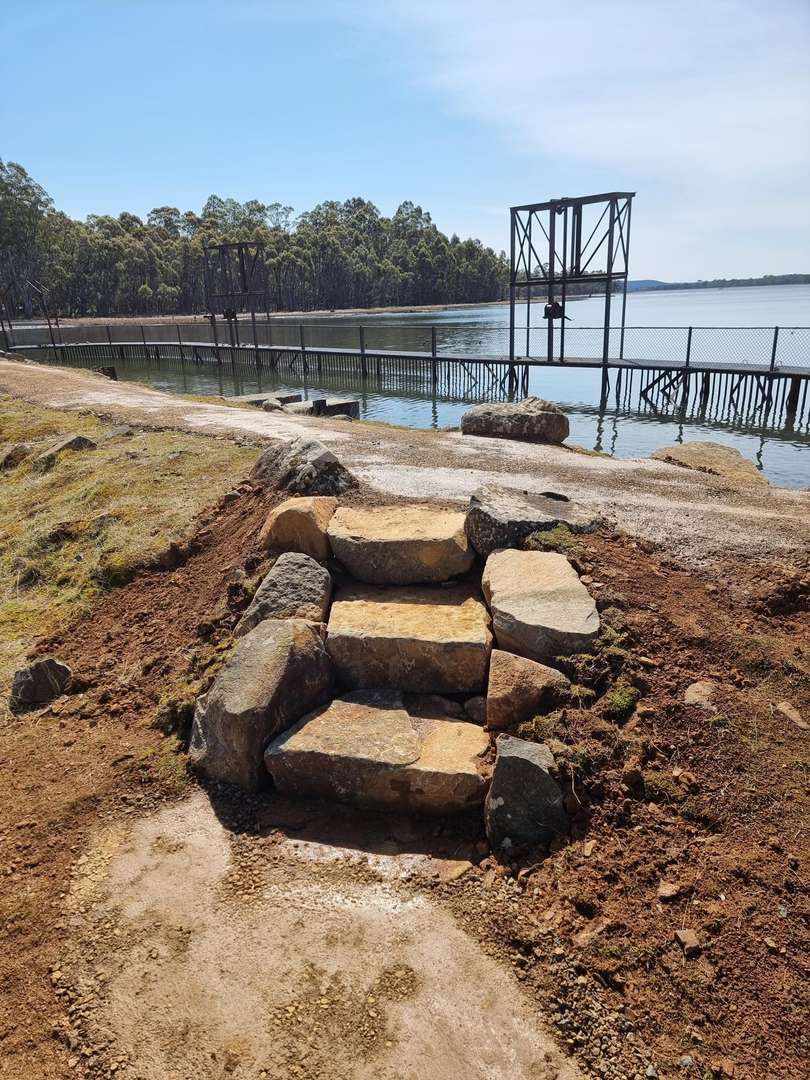 |
| New stairs and pathway |
Works have been completed at the Penstock Lagoon Day Use Area. The works consist of the construction of a 1 meter wide gravel pathway along the levee with ramp and stair access to the carparks on either side of the penstocks. The pathway extends from the Day Use Area at the spillway to the Angler Access Sign on the southern side of the icebreaker.
The Inland Fisheries Service contributed to this Hydro Tasmania initiative which has improved foot access for anglers and visitors to this popular area. The work was completed by Tasmanian company, Mtn. Trails Pty Ltd.
Siurce - https://www.ifs.tas.gov.au/news/2023/oct/06/penstock-lagoon-day-use-area-improvements
- Written by Stephen Smith - Rubicon Web and Technology Training
- Category: IFS, DPIPWE, MAST and Peak Bodies
- Hits: 5965
The Parks and Wildlife Service advise the boom gate on Lake Augusta Road has been re-opened for public access as of today (25 September 2023), along with the boom gate to Double Lagoon.
Vehicle access to Pillans Lake and Talinah Lagoon will remain closed with a view to reopen on 1 November 2023 (approximately) subject to road inspections determining conditions are suitable for vehicular traffic.
For any further information please contact the Great Western Tiers Field Centre on 67012104.
Source : https://www.ifs.tas.gov.au/news/2023/sep/25/lake-augusta-road-and-double-lagoon-boom-gates-open
- Written by Stephen Smith - Rubicon Web and Technology Training
- Category: IFS, DPIPWE, MAST and Peak Bodies
- Hits: 5855
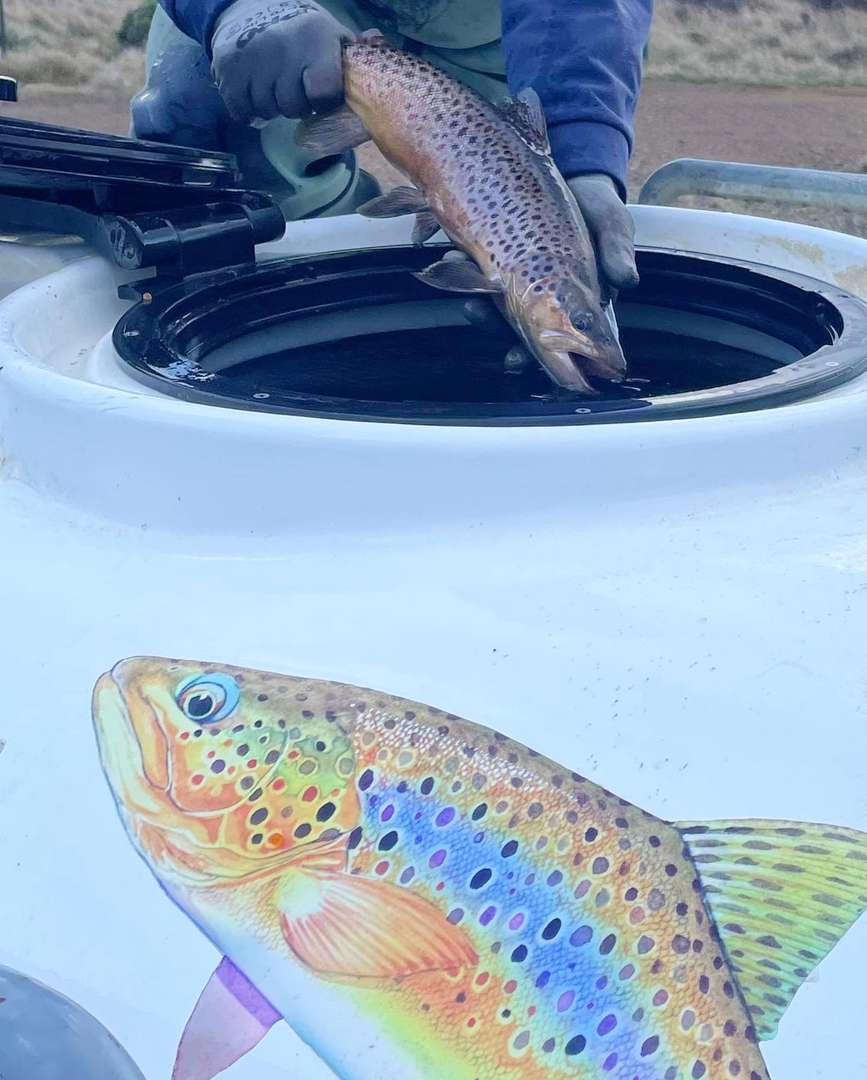
The wild brown trout spawning run is underway and you will be able to see them at Trout Weekend on 20-21 May at the Liawenee Field Station.
- Written by Stephen Smith - Rubicon Web and Technology Training
- Category: IFS, DPIPWE, MAST and Peak Bodies
- Hits: 4915
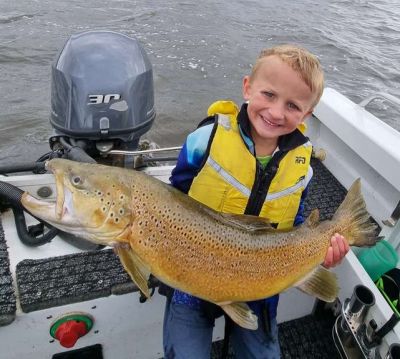 |
| Rex Cambell with a Lake Crescent brown trout |
The big fish keep coming at Lake Crescent with good catches of trophy sized brown trout. Clearly, this is the best season that the lake has had since European carp were eradicated in 2009.
Better catch rates this season are in part due to better water quality in the lake. The Inland Fisheries Service has been tracking water quality (turbidity) in both lakes Crescent and Sorell since 2006 and the latest sampling results show the lowest turbidity readings in both lakes for the last 25 years. The latest testing revealed clarity down to a depth of 60 - 65 centimetres.
With high lake levels it is expected that this trend will continue. This all bodes well for the remainder of the current trout season, the 2023/24 season and beyond. Anglers are reminded that the bag limit for Lake Crescent is 2 fish combined with only 1 fish over 500mm. For more information go to the Lake Crescent Fact Sheet.
Source : https://www.ifs.tas.gov.au/news/2023/feb/28/trophy-trout-in-lake-crescent
- Written by Stephen Smith - Rubicon Web and Technology Training
- Category: IFS, DPIPWE, MAST and Peak Bodies
- Hits: 2288
Current TFBN
Click above for current issue content. The current issue of TFBN is extensive and topical. In Tackle Stores, Newsagents and by subscription.
Delivered to your door for $48 for 2 years (8 issues). To subscribe, send Mike $48 via www.paypal.com.au . (Basic instructions are here) The email is at Contact Us. Your address will be included from PayPal.
Or phone Mike with your c/c handy on 0418129949
Please ensure your details are correct, for Mike to organise delivery.
TFBN Newsletter Sign up Form
Why not submit an article ?
When you have finished for the day, why not have a brag about the ones that didn't get away! Send Mike an article on your fishing (Click here for contact details), and we'll get it published here. Have fun fishing - tasfish.com
Category Descriptions
Here is a list of all of the Article Categories. The number in Brackets, eg (13) is the number of articles. Click on Derwent River and all articles relating to the Derwent will be displayed in the central area.
Articles by Category
-
Rivers (3)
-
Saltwater and Estuary Fishing (149)
-
Kayak Fishing (34)
-
Lakes (1)
-
Great Lake (62)
-
Lake Leake (52)
-
Woods Lake (16)
-
Lake Augusta (11)
-
Huntsman Lake (13)
-
Lake Pedder and Gordon (10)
-
Lake Dulverton (5)
-
Lake Crescent (6)
-
Tooms Lake (10)
-
Lake Mackintosh (2)
-
Lake Barrington (5)
-
Little Lake (8)
-
Meadowbank Lake (5)
-
Lake King William (7)
-
Lake St Clair (2)
-
Western Lakes (12)
-
Arthurs Lake (35)
-
Lake Echo (7)
-
Four Springs (54)
-
Lake Sorell (7)
-
Lake Burbury (6)
-
Other Lakes (57)
-
Brushy Lagoon (18)
-
Little Pine Lagoon (5)
-
Penstock Lagoon (16)
-
Brumbys Creek (7)
-
-
Events (48)
-
Estuary Fishing (0)
-
Coastal Catches (46)
-
Super Trawler (46)
-
IFS, DPIPWE, MAST and Peak Bodies (435)
-
Commercial Interests (98)
-
Other (24)
-
TFBN Back Issues (8)
-
Fly Fishing (67)
-
Trout Fishing (252)
-
Meteorology and Weather (8)
-
Jan’s Flies (50)
-
Tuna Fishing and other Game Fishing (86)
-
Cooking Fish (19)
-
Fishing Information (1)
-
Fishing Books (8)
-
Videos (5)
-
Tackle, Boats and other Equipment (146)
-
World Fly Fishing Championship 2019 (2)
Popular Tags
windyty.com
Visit https://www.windyty.com/
Rubicon Web and Technology Training
Hello everyone, I thought it would be a good time to introduce myself.
My name is Stephen Smith and I have been managing the website tasfish.com since May 2009.
It has been an epic journey of learning and discovery and I am indebted to Mike Stevens for his help, support and patience.
I am developing a new venture Rubicon Web and Technology Training ( www.rwtt.com.au ). The focus is two part, to develop websites for individuals and small business and to train people to effectively use technology in their everyday lives.
Please contact me via www.rwtt.com.au/contact-me/ for further information - Stephen Smith.
From the Archives ... (last chance)
Early season - Bob McKinley
Presented from Issue 105, August 2013
Bob is a professional fishing guide and guides for trout and estuary species. Check him out at www.fishwildtasmania.com
There are several things we look for in our early season trout waters. It is still winter and cold, so some of the things to consider are: Altitude as this dictates the water temperature and therefore feeding activity. Food for the fish. Availability of trout food is generally dictated by the quantity and quality of weed beds.
Quantity of fish.
Three waters which I believe fit all three requirements are:
Read more ...
